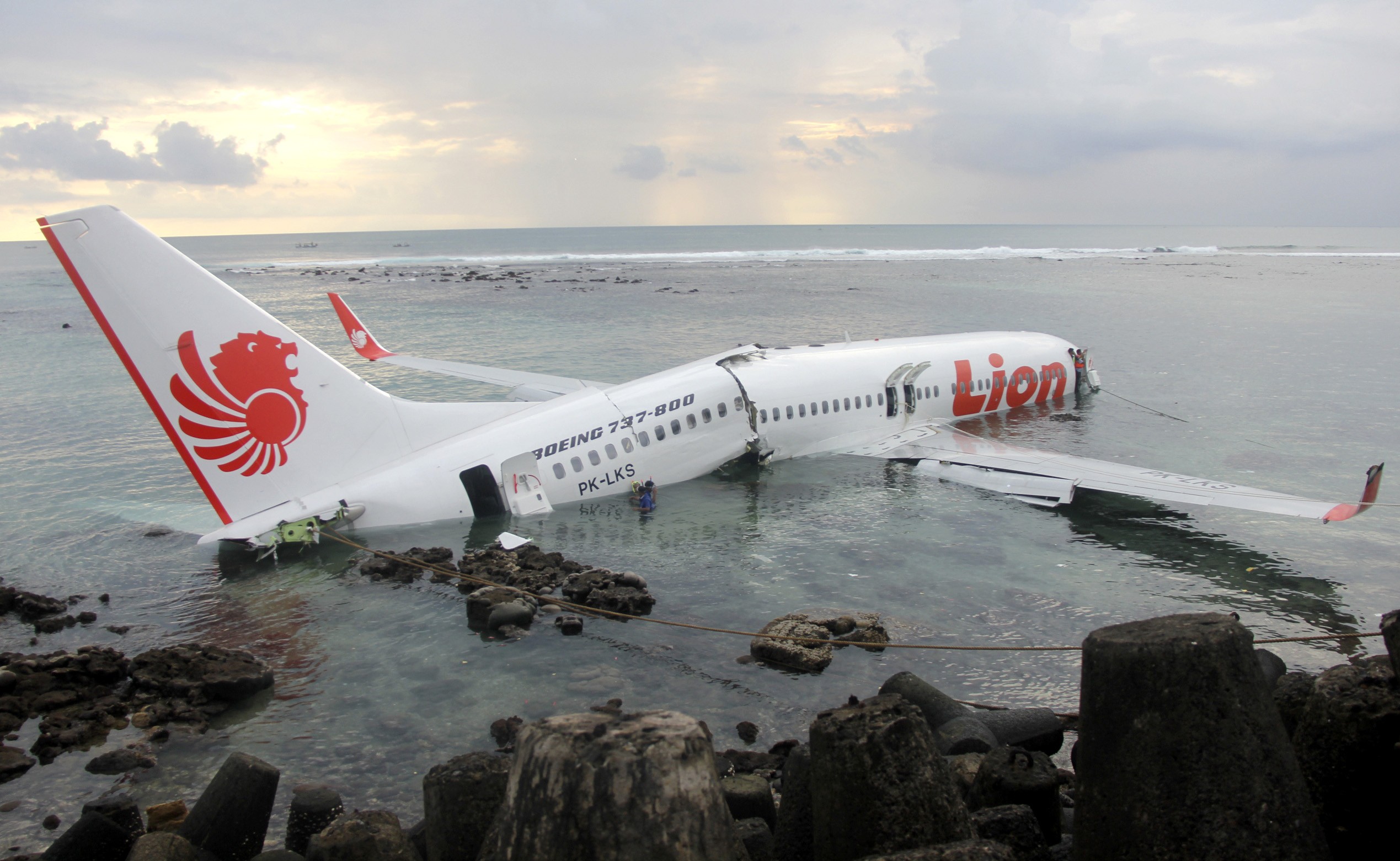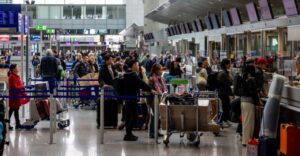The odds of dying on a commercial flight are 9 million to 1, but there’s a lot that can go wrong when you’re 33,000 feet and going down fast. The decisions you make can save your life and the odds aren’t as bad as you think as 95% of airplane crashes have survivors.
1) Clothing: Be comfortable without loose parts. Wear long pants, a long sleeve-shirt and sturdy comfortable clothes. Consider keeping a jacket beside you. Ensure clothing isn’t flammable. Prefer wool if flying over the ocean as it has insulating qualities.
2) It is statistically safer to fly in the tail of the aircraft – 40% higher chance of survival than the first few rows. If possible get a seat near the exit at the back, on the aisle.
3) You’ve heard it before, but there’s no harm actually paying attention to the pre-flight safety speech. Every type of aircraft has different types of safety instructions. If you’re sitting in an exit row make sure you know how to open the exit door if it is necessary. The flight attendant will open the door but what if they are dead or injured?
4) Count the number of seats between you and the exit row. If the plane crashes it could be smoky and loud. You may need to feel your way to the exit and it would help to know how far away it is.
5) Wear your seatbelt as tightly as possible and as close to your pelfvis as you can get it so that you will be able to be held in case of an emergency.
6) If you are landing on water, ensure you have your life vest on, though you will blow it up once you get out otherwise you will be stuck in the plane with your life jacket forcing you upwards towards the cabin roof making it hard to swim back down. . If you are going to crash on land, review the exits and have a blanket or jacket nearby.
7) Ensure your seat is in an upright position if you know you will crash. Zip up your jacket and make sure your shoes are tied tightly to your feet. Use one of the two standard brace positions used for surviving a plane crash. Try to be calm. Make sure your feet are flat on the floor and further back than your knees to reduce leg injuries. Place your legs as far under the seat as possible to avoid breaking your shin bones.
8) Brace yourself against the seat in front of you. It is sometimes recommended that you put your head directly against the seat in front of you and lace your fingers behindyour head.
9) Put your oxygen mask on before helping others. You need 15 seconds or less to start breathing through your oxygen mask before you are unconscious.
10) Protect yourself from smoke that is thick and highly toxic by covering your nose and mouth with a cloth. If possible moisten the cloth. stay low as you escape to duck under the smoke. Get out of the plane as quickly as possible as 68$% f plane crash deaths are due to post-crash fire rather than injuries sustained in the crash itself. You generally have less than two minutes to exit. Make sure the exit you choose is safe. Look through the window to ensure there is no hazard outside.
11) Listen to flight attendants. They undergo training to be able to instruct and assist people.
12) Ditch your belongings. Get out ASAP.
13) Get at least 500 feet (150 meters) from the wreckage. You don’t want to be too close. a fire or explosion can happen. Swim as far away as possible.
14) Stay in one place once you leave the aircraft. Chances are that rescue teams are on their way.

In this photo released by Indonesian Police, the wreckage of a crashed Lion Air plane sits on the water near the airport in Bali, Indonesia on Saturday, April 13, 2013. The plane carrying more than 100 passengers and crew overshot a runway on the Indonesian resort island of Bali on Saturday and crashed into the sea, injuring nearly two dozen people, officials said.
Ask me anything
Explore related questions





